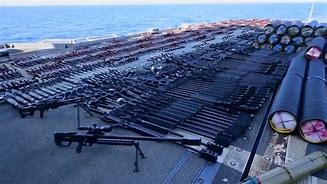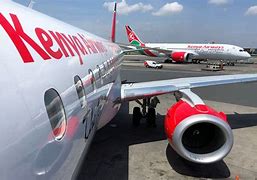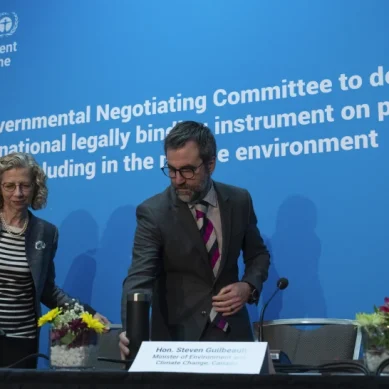
Attacks on shipping in the Red Sea by the Houthi militia in Yemen have exposed the vulnerability of African maritime security. Since November 2023, there have been 133 reported incidents, including 14 vessels struck by missiles or drones and 18 vessels hijacked by Somali pirates.
The disruptions caused by nonstate actors unbounded by international law and with access to stocks of standoff armaments pose fundamental challenges to Africa’s security and economic development.
The Houthis further threatened to disrupt the 20 submarine cables providing subsea communication networks around the Red Sea. Shortly thereafter, a vessel carrying 21,000 metric tonnes of ammonium phosphate sulphate fertiliser, the Rubymar, was struck by a Houthi missile and began sinking. Its dragging anchor is believed to have damaged three subsea cables.
The attacks have convulsed shipping from the Red Sea through the Gulf of Aden to the Western Indian Ocean, through which 25 per cent of global shipping traffic flows. The repercussions have been immediately visible.
African citizens are paying the price of delays, more expensive consumer goods, disruption to local economic entities, and polluted waterways.
Global shipping companies have diverted routes away from the Red Sea, altering shipping flows between the huge global markets of Asia and Europe. Insurance premiums for shipping have surged, raising the costs of goods for consumers in Africa and around the world. Diversions around South Africa can add up to 2 weeks and 6 000 extra nautical miles to a vessel’s journey.
Uncertainty over energy flows and freight are impacting many countries who are dependent on imports, contributing to a highly unpredictable business environment. This uncertainty directly impacts Egypt’s $10 billion in annual revenues from tolls on vessels using the Suez Canal.
Meanwhile, pollution from the debris generated by the attacks and responses have degraded the waters and marine ecosystems along Africa’s Red Sea coastline.
The 57 million East Africans facing acute food insecurity, including more than 10 million refugees and internally displaced people (IDPs), are in the firing line as well. All food supplies to the Horn and East Africa flow via the Red Sea from Europe, Russia and Ukraine, and the Western Hemisphere. The 6.6 million IDPs in Sudan, in particular, are heavily dependent on food aid delivered through the Red Sea.
In short, it is African citizens who are paying the price of delays, more expensive consumer goods, disruption to local economic entities and polluted waterways from maritime insecurity in the Red Sea and Western Indian Ocean.
Maritime security is vital to the African continent – sometimes referred to as the planet’s largest island. The sudden escalation in attacks has revived threats posed by the decade dormant disruption caused by Somali piracy in the first years of the 21st century.
The insecurity at sea off Yemen has also revealed the threadbare nature of African maritime security – the impacts from which are not just felt in the Red Sea but across the entire continent.
The spike in the costs of freight shipped to Africa raises prices to consumers and businesses for virtually every item imported or exported. For fragile economies and those of landlocked countries in East Africa most dependent on the free flow of goods from the Red Sea, any rise in the cost of consumer goods has a direct effect on lives and livelihoods.
No East African navy is currently capable of mounting anti-piracy operations in their waters. Any naval assets committed to thwart the attacks in the Red and Arabian Seas leave fewer vessels to police African maritime hotspots along the east coast of the continent – including Sudan’s humanitarian crisis, the potential regionalisation of Somalia and Ethiopia’s diplomatic row over sea access via Somaliland, and a possible scenario of militant extremists employing Houthi tactics against energy infrastructure off the northern coast of Mozambique.
The spike in maritime incidents in the Red Sea and Indian Ocean are creating space for heightened piracy incidents and illicit trafficking. Diverted shipping around the rest of Africa also creates more targets of piracy elsewhere, particularly where more vessels must sail close to the coast.
The Houthis have also demonstrated a robust capacity for ballistic missile, drone, and subsea technological disruption. These deployments flag the proliferation of modern materiel to nonstate armed groups. The increased maritime militarisation of nonstate actors and criminal groups poses a direct threat to African assets, infrastructure and national interests elsewhere on the continent.
Every African country – coastal or landlocked – depends on goods carried by shipping and subsea cable networks.
The Red Sea maritime crisis has shown how the acts of what may seem a faraway nonstate actor, have impacted global economic dynamics. African governments must consider that the tactics the Houthis are using could be employed elsewhere on the continent and, thus, be prepared to safeguard their maritime and economic interests.
The Red Sea crisis has underscored the importance of redundancy. Every African country – coastal or landlocked – depends on goods carried by shipping and subsea cable networks. Having the ability to reroute telecommunications, for example along the subsea cable networks around South Africa, provides valuable backup. The Cape of Good Hope route thus offers an interim dual alternative for surface and subsurface maritime services for the continent.
The crisis has also highlighted the suboptimal functionality of some African ports, which force ships to wait for prolonged periods outside the harbour, making these vessels more attractive targets for piracy or other criminality. Ports that function well, are secure and located at strategic passes on the shifting shipping routes, stand to benefit.
Currently, the majority of Africa’s harbours are struggling to handle the current volume of freight and cope with the security impacts from these delays and late arrivals.











